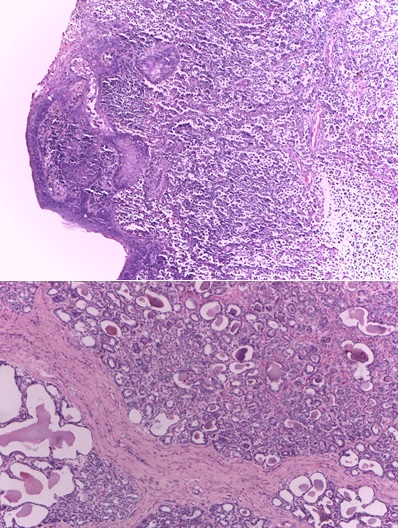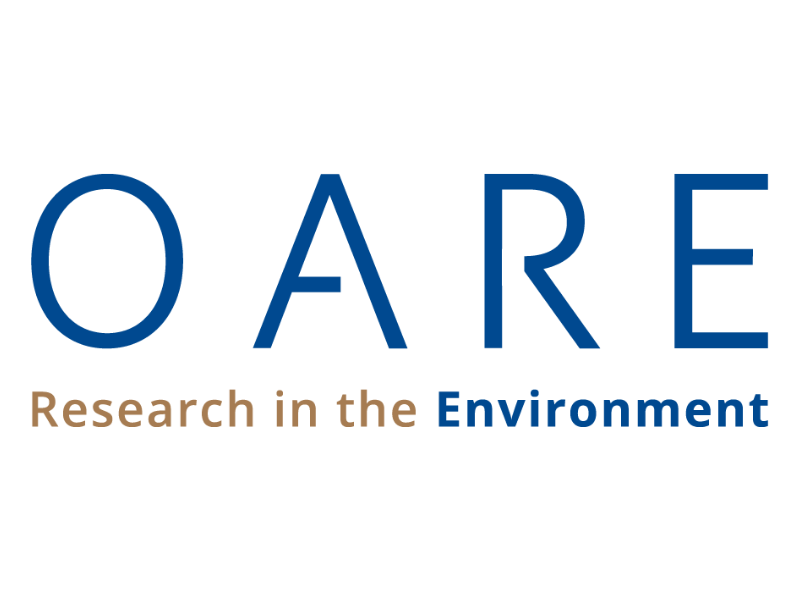Tumor mamario canino: factores de riesgo y su influencia epidemiológica en Manizales-Colombia
Canine mammary gland tumors: risk factors and their epidemiological influence in Manizales-Colombia Canine mammary gland tumors epidemiology

Mostrar biografía de los autores
Objetivo. Describir la prevalencia del tumor mamario canino (TMC) en hembras en el municipio de Manizales-Colombia durante 2014-2017. Materiales y métodos. Se consolidó una base de datos de 15961 pacientes. Las variables analizadas fueron raza, edad, historia reproductiva, condición corporal, tipo de dieta, y caracterización clínica del tumor mediante el sistema de estadificación tumor-nódulo-metástasis (TNM). El análisis estadístico incluyó prueba de chi-cuadrado de Pearson con corrección de Yates, prueba exacta de Fisher (p<0.05), riesgo relativo, oportunidad relativa (IC95%) y análisis de supervivencia de Kaplan-Meier. Resultados. La incidencia en perros de razas puras fue 79.14%, con un pico promedio a la edad de 9.3 años. La prueba chi-cuadrado de Pearson, el riesgo relativo y las oportunidades relativas mostraron un riesgo alto para razas puras (p=0.019,3.96/100,1.64, respectivamente). Hembras entre los 9 y 12 años mostraron una probabilidad del 74% de desarrollo de tumor mamario. No se encontró una relación significativa entre la masa corporal o estado reproductivo pero una elevada asociación con la dita casera (p<0.001). Los pares inguinales mamarios fueron los más afectados (6.9%). La estimación de Kaplan-Meier mostró una alta supervivencia para pacientes intervenidas quirúrgicamente, con 2013 días después del diagnóstico con cirugía en comparación con 1484 días sin cirugía. Conclusiones. El estudio confirma la relevancia de los factores de riesgo: tipo de raza, edad, condición corporal y tipo de dieta en la presentación de tumor mamario. Además, se destaca la necesidad de mejorar e integrar los sistemas de información de diagnóstico veterinario, considerando su importancia en la salud pública.
Visitas del artículo 1763 | Visitas PDF
Descargas
- Dhami MA, Tank PH, Karle AS, Vedpathak HS, Bhatia AS. Epidemiology of canine mammary gland tumours in Gujarat. Veterinary World. 2010; 3(6):282–285. URL: http://www.veterinaryworld.org/Vol.3/June/Epidemiology%20of%20Canine%20Mammary%20Gland%20Tumours%20in%20Gujarat.pdf
- Pinho SS, Carvalho S, Cabral J, Reis CA, Gärtner, F. Canine tumors: A spontaneous animal model of human carcinogenesis. Transl Res. 2012; 159(3):165–172. https://doi.org/10.1016/j.trsl.2011.11.005
- Dobson JM. Breed-Predispositions to Cancer in Pedigree Dogs. ISRN Vet Sci. 2013; 2013:941275. http://dx.doi.org/10.1155/2013/941275
- Merlo DF, Rossi L, Pellegrino C, Ceppi M, Cardellino U, Capurro C, Ratto A, Sambucco PL, Sestito V, Tanara G, Bocchini, V. Cancer incidence in pet dogs: findings of the Animal Tumor Registry of Genoa, Italy. J Vet Intern Med. 2008; 22(4):976–984. https://doi.org/10.1111/j.1939-1676.2008.0133.x
- Vascellari M, Baioni E, Ru G, Carminato A, Mutinelli F. Animal tumour registry of two provinces in northern Italy: incidence of spontaneous tumours in dogs and cats. BMC Vet Res. 2009; 5(39):1-9. https://doi.org/10.1186/1746-6148-5-39
- Kumaraguruparan R, Karunagaran D, Balachandran C, Manohar BM, Nagini S. Of humans and canines: a comparative evaluation of heat shock and apoptosis-associated proteins in mammary tumors. Clin Chim Acta. 2006; 365(1-2):168-176. https://doi.org/10.1016/j.cca.2005.08.018
- Chang SC, Chang CC, Chang TJ, Wong ML. Prognostic factors associated with survival two years after surgery in dogs with malignant mammary tumors: 79 cases (1998-2002). J Am Vet Med Assoc. 2005; 227(10):1625–1629. https://doi.org/10.2460/javma.2005.227.1625
- Sleeckx N, de Rooster H, Veldhuis KE, Van Ginneken C, Van Brantegem L. Canine Mammary Tumours, an Overview. Reprod Domest Anim. 2011; 46(6):1112–1131. https://doi.org/10.1111/j.1439-0531.2011.01816.x
- Hemanth I, Kumar R, Varshney KC, Nair MG, Ramesh KB, Sivakumar M, Thanislass J. Epidemiological and clinical studies on canine mammary tumors. Indian J Vet Res. 2015; 24(1):11-14. https://www.indianjournals.com/ijor.aspx?target=ijor:ijvr&volume=24&issue=1&article=003
- Sahabi K, Selvarajah GT, Noordin MM, Sharma RSK, Dhaliwal GK. Retrospective Histopathological Study of Canine Mammary Gland Tumours Diagnosed From 2006 – 2012 in University Putra Malaysia. J Vet Malaysia. 2015; 27(1):1–6. http://jvm.vam.org.my/wp-content/uploads/2016/07/JVM-2015-Issue-1_Karibu.pdf
- Salas Y, Márquez A, Diaz D, Romero L. Epidemiological Study of Mammary Tumors in Female Dogs Diagnosed during the Period 2002-2012: A Growing Animal Health Problem. PLoS One. 2015; 10:e0127381. https://doi.org/10.1371/journal.pone.0127381
- Bravo TD, Cruz-Casallas P, Ochoa AJ. Prevalencia de neoplasias en caninos en la universidad de los Llanos, durante 2004 a 2007. Rev MVZ Córdoba. 2010; 15(1):1925-1937. https://doi.org/10.21897/rmvz.330
- Caicedo JA, Iregui CA, Cabarcas ME, Acosta BJ. Estudio comparativo de la frecuencia de tumores mamarios según sexo, edad y tipo histológico en caninos y humanos en los laboratorios de patología anatómica de la Universidad Nacional de Colombia sede Bogotá. Rev Col Cien Anim. 2012; 5(1):52–66. http://revistas.ut.edu.co/index.php/ciencianimal/article/view/124/123
- Hsu WL, Huang HM, Liao JW, Wong ML, Chang SC. Increased survival in dogs with malignant mammary tumours overexpressing HER-2 protein and detection of a silent single nucleotide polymorphism in the canine HER-2 gene. Vet J. 2009; 180(1):116–123. https://doi.org/10.1016/j.tvjl.2007.10.013
- Shinoda H, Legare ME, Mason GL, Berkbigler JL, Afzali MF, Flint AF, Hanneman WH. Significance of ERα, HER2, and CAV1 expression and molecular subtype classification to canine mammary gland tumor. J Vet Diagn Invest. 2014; 26(3):390–403. https://doi.org/10.1177/1040638714527289
- Campos, LC, Silva JO, Santos FE, Araújo MR, Lavalle GE, Ferreira E, Cassali GD. Prognostic significance of tissue and serum HER2 and MUC1 in canine mammary cancer. J Vet Diag Inv. 2015; 27(4):531–535. https://doi.org/10.1177/1040638715592445
- Sorenmo KU, Rasotto R, Zappulli V, Goldschmidt MH. Development, anatomy, histology, lymphatic drainage, clinical features, and cell differentiation markers of canine mammary gland neoplasms. Vet Pathol. 2011; 48(1):85–97. https://doi.org/10.1177/0300985810389480
- Rao NAS. Characterization of Canine Mammary Carcinoma using Dog-Specific cDNA arrays, [Ph.D. Thesis]. Utrecht University. Faculty of Veterinary Medicine: Holland, Utrecht; 2008. https://dspace.library.uu.nl/bitstream/1874/27479/2/nagesharao.pdf.
- Perez-Alenza MD, Peña L, Del Castillo N, Nieto, AI. Factors influencing the incidence and prognosis of canine mammary tumours. J Small Anim Pract. 2000; 41(7):287–291. https://doi.org/10.1111/j.1748-5827.2000.tb03203.x
- Texeira SV, Silva ILD, Nunes FC, Campos CB, Oliveira MR, Lavalle GE, Cassali GD. Serum evaluation of leptin, IL-6, IGF-1 and estrogen in obese bitches with early stages of mammary carcinoma. Arq Bras Med Vet Zootec. 2019. 71(1):143-150. http://dx.doi.org/10.1590/1678-4162-10259
- Youlden DR, Cramb SM, Dunn NAM, Muller JM, Pyke CM, Baade P D. The descriptive epidemiology of female breast cancer: An international comparison of screening, incidence, survival and mortality. Canc Epid. 2012; 36(3):237–248. https://doi.org/10.1016/j.canep.2012.02.007
- Vogel VG. Epidemiology of Breast Cancer, In: Bland KI, Copeland EM, Klimberg VS, Gradishar WJ, (editors). The Breast, Comprehensive Management of Benign and Malignant Diseases. 5th ed. United States: Elsevier; 2018. URL: https://www.us.elsevierhealth.com/the-breast-9780323359559.html
- Vascellari M, Capello K, Carminato A, Zanardello C, Baioni E, Mutinelli F. Incidence of mammary tumors in the canine population living in the Veneto region (Northeastern Italy): Risk factors and similarities to human breast cancer. Prev Vet Med. 2016; 126(1):183–189. https://doi.org/10.1016/j.prevetmed.2016.02.008
- Dias MLM, Leon AJM, Castro MB, Galera PD. Survival analysis of female dogs with mammary tumors after mastectomy: epidemiological, clinical and morphological aspects. Pesq. Vet. Bras. 2016; 36(3):181-186. http://dx.doi.org/10.1590/S0100-736X2016000300006
- Salt C, Morris PJ, German AJ, Wilson D, Lund EM, Cole TJ, Butterwick RF. Growth standard charts for monitoring bodyweight in dogs of different sizes. PLoS ONE. 2017; 12(9):1-28. https://doi.org/10.1371/journal.pone.0182064
- Fritz, A, Percy C, Jack A, Shanmugaratnam K, Sobin L, Parkin DM, Whelan S, editors. International Classification of Diseases for Oncology. 3rd ed. Switzerland: World Health Organization; 2013. https://apps.who.int/iris/bitstream/handle/10665/96612/9789241548496_eng.pdf;jsessionid=CCE98E0DE2C7A782CE3591EBBBC2FC85?sequence=1
- Laflamme DP. Understanding and Managing Obesity in Dogs and Cats. Vet Clin Small Anim. 2006; 36(6):1283–1295. https://doi.org/10.1016/j.cvsm.2006.08.005
- Simpson JW, Anderson RS, Markwell PJ, editors. Clinical Nutrition of Dog and Cat. United Kingdom: Blackwell Scientific; 1993. https://www.cabdirect.org/cabdirect/abstract/19931461684
- Neto GBP, Brunetto MA, Sousa MG, Carciofi AC, Camacho AA. Effects of weight loss on the cardiac parameters of obese dogs. Pesq Vet Bras. 2010; 30(2):167-171. http://dx.doi.org/10.1590/S0100-736X2010000200012
- Edge SB, Byrd DR, Compton CC, Fritz AG, Greene FL, Trotti A, editors. AJCC Cancer Staging Manual. United States: Springer; 2010. https://cancerstaging.org/references-tools/deskreferences/Documents/AJCC%207th%20Ed%20Cancer%20Staging%20Manual.pdf
- Cassali GD, Lavalle GE, Brunner CH, Ferreira EJ, Bertagnolli AC, Lima AE, et al. Consensus for the Diagnosis, Prognosis and Treatment of Canine Mammary Tumors. Braz J Vet Pat. 2011; 4(2):153-180. https://bjvp.org.br/wp-content/uploads/2015/07/DOWNLOAD-FULL-ARTICLE-29-20881_2011_7_11_14_42.pdf
- de la Cruz HNI, Monreal GAE, Carvajal FV, Barrón VCA, Martínez BJ, Zarate TA, et al. Frecuencia y caracterización de las principales neoplasias presentes en el perro doméstico en Tamaulipas (México). Rev Med Vet. 2017; 35:53-71. http://dx.doi.org/10.19052/mv.4389
- Gal AF, Andriopoulou A, Miclăuş V, Tăbăran F, Taulescu M, Nagy A, et al. Comparative Data Concerning the Incidence of Tumors in Dogs in a Period of Ten Years in Athens (Greece) and Cluj-Napoca (Romania) Bull. UASVM Vet Med. 2015; 72(2):371-377. http://dx.doi.org/10.15835/buasvmcn-vm:11538
- Baioni E, Scanziani E, Vincenti MC, Leschiera M, Bozzetta E, Pezzolato M, et al. Estimating canine cancer incidence: findings from a population-based tumour registry in northwestern Italy. BMC Vet Res.2017; 13(203):1-9. https://doi.org/10.1186/s12917-017-1126-0
- Pastor N, Caballé NC, Santella M, Ezquerra LJ, Tarazona, R, Duran E. Epidemiological study of canine mammary tumors: age, breed, size and malignancy. Austral J Vet Sci. 2018; 50(3):143-147. https://doi.org/10.4067/S0719-81322018000300143
- Pedraza-Ordoñez FJ, Ferreira_De-La-Cuesta G, Murillo Mnejura SM. Análisis retrospectivo de 124 casos de neoplasia mamaria en caninos de la ciudad de Manizales. Revista Veterinaria y Zootecnia. 2008; 2(2):21-28. http://vip.ucaldas.edu.co/vetzootec/downloads/v2n2a02.pdf
- Gupta K, Kumar NS, Kumar, SU, Mohindroo J, Mahajan S, Raghunath M, Singh K. Epidemiological studies on canine mammary tumour and its relevance for breast cancer studies. IOSR J Phar. 2012; 2(2):322-333. http://iosrphr.org/papers/v2i2/ZJ022322333.pdf
- Scheneider R, Dorn CR, Taylor, DON. Factors Influencing Canine Mammary Cancer Development and Postsurgical Survival. JNat Cancer Inst. 1969; 43(6):1249-1261. https://doi.org/10.1093/jnci/43.6.1249
- Patsikas MN, Karayannopoulou M, Kaldrymidoy E, Papazoglou LG, Papadopoulou PL, Tzegas SI, et al. The lymph drainage of the neoplastic mammary glands in the bitch: a lymphographic study. Anat Histol Embryol. 2006; 35(4):228–234. https://doi.org/10.1111/j.1439-0264.2005.00664.x
- Boerkamp KM, Teske E, Boon LR, Grinwis CMG, Van den Bossche L, Rutteman GR. Estimated incidence rate and distribution of tumours in 4,653 cases of archival submissions derived from the Dutch golden retriever population. BMC Vet Res. 2014; 10(34):1-10. https://doi.org/10.1186/1746-6148-10-34























